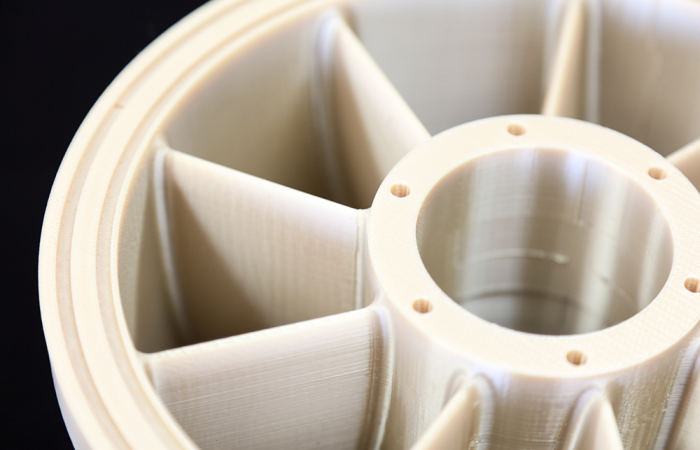
Fixed guide vane for hydropower turbine printed by ORNL (photo credit Genevieve Martin/ORNL, U.S. Department of Energy)
Advanced manufacturing and materials, such as 3D printing and novel component coatings, could offer solutions to modernize the existing fleet and design new approaches to hydropower, according to a report published by Oak Ridge National Laboratory.
The hydropower industry — which the U.S. Energy Information Administration said accounted for 30% of all renewable energy generation and 6.1% of the total energy portfolio in 2021 — was built using traditional manufacturing processes. But surging energy demand, higher material costs and supply chain hurdles have led researchers to rethink the manufacturing of hydropower equipment, ORNL said.
Hydropower technology and designs have been optimized throughout the years, but manufacturing of hydropower components still relies heavily on traditional methods and materials, according to the Advanced Manufacturing and Materials for Hydropower: Challenges and Opportunities report. Changes in global energy production systems and international supply chain issues are inspiring the manufacturing sector to reconsider their processes. Similarly, the hydropower industry is facing manufacturing challenges stemming from well-known maintenance issues, environmental impact mitigations and changes in operations. These challenges, along with continued innovation in new hydropower and pumped storage development and modernization of the fleet, present an opportunity for advanced manufacturing and materials (AMM) to provide immense value to the hydropower industry.